Some users are encountering the VMware Workstation Unrecoverable Error: (vcpu-0) error when trying to install a second operating system on a particular computer. Some users report that the error occurs when setting up the second virtual machine while others report that it gets triggered whenever they try to boot from it. The issue doesn’t seem to be specific to a certain operating system since it’s reported to occur with OsX, Windows and Linux installations.
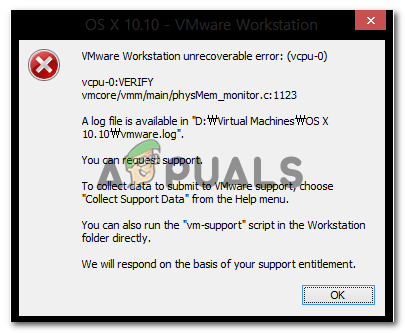
What is causing the VMware Workstation Unrecoverable Error: (vcpu-0)
We investigated this particular issue by looking at user reports and the repair strategies that they used to get the issue resolved. Based on what we gathered, there are several common scenarios that will trigger this particular error message:
- Another virtualization software is running at the same time – This is one of the most common reasons why this error occurs. WMware Workstation will throw this error if you try to launch a virtual machine while Virtualbox (or similar software is running)
- Secure Virtual Machine (SVM) is disabled from BIOS/UEFI – This issue is often reported to occur if Secure Virtual Machine (SVM) is disabled from BIOS or UEFI (depending on your configuration). Several users in a similar situation have managed to get the issue resolved by making sure that SVM is enabled.
- Simultaneous Multithreading (SMT) is enabled from BIOS/UEFI – VMware and other similar software are known to conflict with multithreading. Generally, you’ll have to disable SMT from your BIOS / UEFI settings after you enable SVM in order to avoid any conflicts
- CPU or other component is overclocked – Overclocked components can also trigger this particular error message. This happens because, during the booting sequence, the virtual machine performs a selection of frequencies checks. In some cases, a higher frequency than normal on your CPU/GPU can trick the software into throwing this particular error message.
- VMW\ware bug – There’s a well-known bug that produces this particular error message even when none of the above conditions are met. Since this bug was supposedly patched with version 12.5, the error might be resolved by updating the VMware application to the latest version.
- Mac OS is only designed to run on Apple hardware – As specified in Apple’s EULA, MAC OS is designed to only be run or virtualized on Apple harware. This particular error might occur when trying to run on initiate a MacOS virtual image.
If you’re currently struggling to resolve this particular error message, this article will provide you with a selection of potential repair strategies. Below you have a collection of methods that other users in a similar situation have used to get the VMware Workstation Unrecoverable Error: (vcpu-0) error resolved. For the best results, follow the potential fixes below in order until you encounter a method that is effective in your particular scenario.
Method 1: Updating the VMware Workstation application
Before you try anything else, it’s important to ensure that you’re running the latest VMware Workstation version. There are a lot of users reports that point towards a bug being responsible for the VMware Workstation Unrecoverable Error: (vcpu-0) error in Wmware Workstation 11.
Since this bug has already been patched by the developers, you will be able to eliminate the issue by ensuring that you VMware Workstation client is updated to the latest version. To do this, simply open VMware Workstation and go to Player > Help > Software Updates.
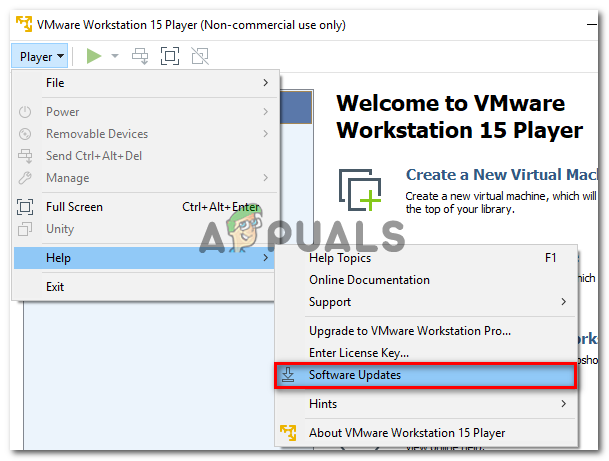
Once you get to the Software Updates screen, click on Check for Updates and see if a new version is available. If it is, follow the on-screen prompts to install it on your computer.
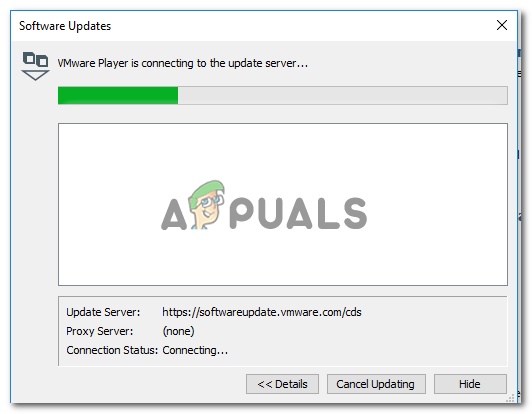
Once the newer version is installed, restart your computer and see if the issue has been resolved. If you’re still encountering the VMware Workstation Unrecoverable Error: (vcpu-0) error, move down to the next method below.
Method 2: Disabling / Uninstalling another organization’s virtualization software
You might be encountering this issue because VMware Workstation and Oracle VM VirtualBox are both running at the same time. Although this is mainly reported to occur when the user tries to run a MacOS virtual machine, some affected users have reported that the issue was resolved as soon as they closed Oracle VM Virtualbox.
Other users have reported that the issue was only resolved after they uninstalled Oracle VM VirtualBox. Just to ensure that a software conflict is not facilitating the apparition of the VMware Workstation Unrecoverable Error: (vcpu-0) error, we urge you to follow the steps below to uninstall Oracle VM VirtualBox (or similar rival virtualization software):
- Press Windows key + R to open up a Run dialog box. Then, type “appwiz.cpl” and press Enter to open up Programs and Features.

Type appwiz.cpl and Press Enter to Open The List of Installed Programs on Windows - Inside Programs and Features, scroll through the list of applications and locate Oracle VM Virtualbox (or a different rival virtualization software). Once you see it, right-click on it and choose Uninstall.

Uninstalling Oracle Virtualbox - Once the rival organization’s software has been removed, restart your computer and see if the issue has been resolved at the next startup.
If you’re still encountering the VMware Workstation Unrecoverable Error: (vcpu-0) error, move down to the next method below.
Method 3: Enabling Secure Virtual Machine (SVM) or Intel Virtualization Technology from BIOS/UEFI
SVM (Secure Virtual Machine) is the equivalent of Intel VT-x/Intel Virtualization technology on some machines. But regardless of the virtualization technology that your computer is using, it needs to be enabled in order to ensure that virtual machine are running smoothly.
Enabling SVM or Intel Virtualization is only possible by entering your BIOS/UEFI settings – this procedure will be different according to your motherboard manufacturer. However, there are some similarities.
The first step would be to enter your BIOS/UEFI settings – This procedure will require to press the Setup key during the initial booting sequence. The Setup key should appear on the initial screen, but just in case it doesn’t, you can do an online search with “your motherboard mother + setup key ” to discover your Setup key.
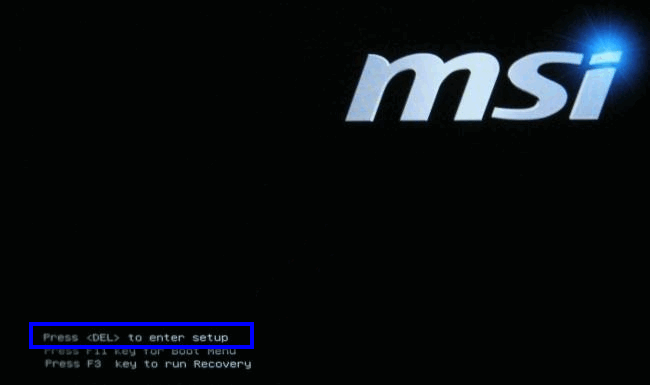
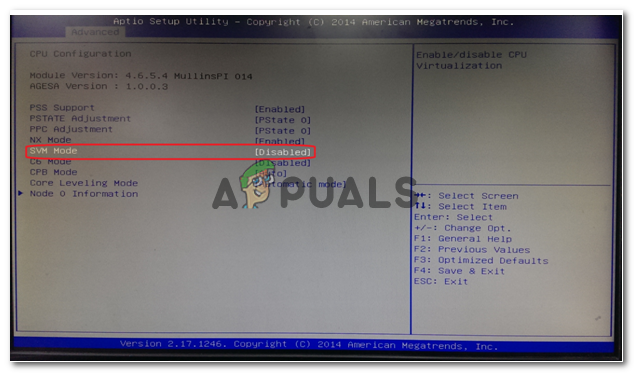
Once SVM mode or Intel Virtualization Technology has been enabled, restart your computer and see if the VMware Workstation Unrecoverable Error: (vcpu-0) error has been resolved. If you’re still seeing the error when trying to launch or create a virtual machine using VMware Workstation, move down to the next method below.
Method 4: Disabling simultaneous multithreading (SMT) in the BIOS/UEFI
There are a few reasons why you’d want to disable SMT (Simultaneous multithreading). Altough keeping this option disabled might yield slightly better performance with some GPU’s, we don’t recommend doing so unless you really need to.
Several users encountering the VMware Workstation Unrecoverable Error: (vcpu-0) error have managed to resolve it after disabling simultaneous multithreading (SMT) from their BIOS settings. Although there’s no official explanation from the developers, affected users are speculating that VMware Workstation is conflicting with SMT on several different configurations.
To disable SMT, you’ll need to enter your BIOS settings. To do this, access your BIOS settings by pressing the Setup key during the initial screen.

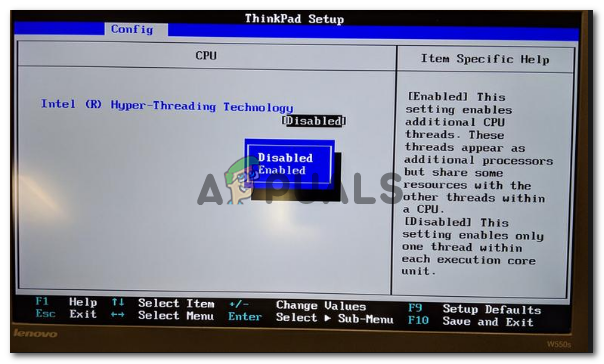
Once you get into your BIOS settings, it becomes a matter of finding out the control options for SMT. Typically, you will be able to find it under one of the following sub-menus: Tweaker Config, CPU Feature, Advanced BIOS, Performance, Processor, CPU.
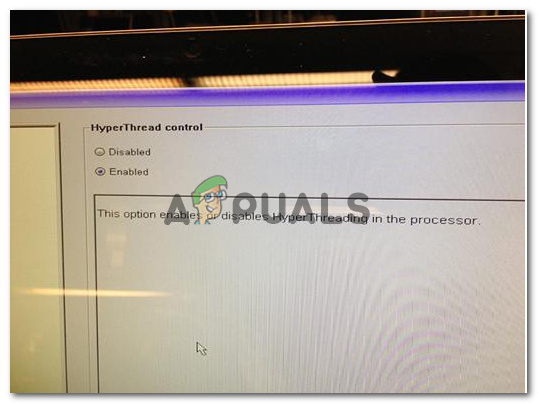
Depending on which BIOS/UEFI version and motherboard manufacturer you’re working with, the control option dedicated to this technology might be one of the following: Intel (R) Hyper-Threading, Hyper-Treading technology, Hyperthreading function, CPU Hyper-Threading or Hyperthread control.
Once you manage to find this option, set it to disable, restart your computer and see if the VMware Workstation Unrecoverable Error: (vcpu-0) error is resolved. If you are still seeing the same error message when trying to run a virtual machine, move down to the next method below.
Method 5: Reverting to the default clocking frequencies
Several users struggling to resolve the VMware Workstation Unrecoverable Error: (vcpu-0) error have finally discovered that the issue was only occurring if the CPU frequency was overclocked. As soon as they reverted to the default CPU frequency, the issue went away.
This suggests that the issue can also be triggered if the initial checks performed by VMware Workstation reveals some inconsistencies regarding your CPU frequencies. As it turns out, the software might throw this error if it notices that the host machine CPU resources are different than the original specs.
If you know you are overclocked, access your BIOS/UEFI settings, go to the Overclocking sub-menu and revert to the default frequencies.
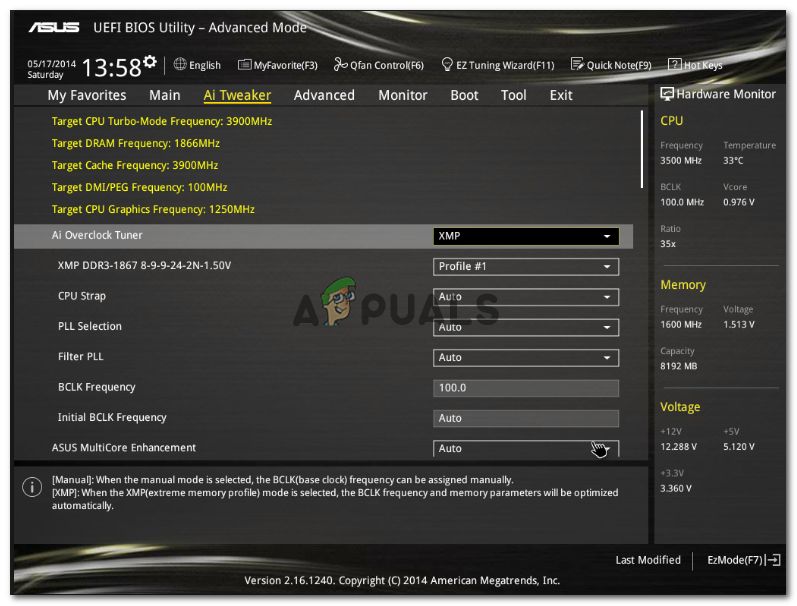
Once the CPU is reverted to the default frequencies, run the virtual machine again and see if the issue has been resolved. If you’re still encountering the VMware Workstation Unrecoverable Error: (vcpu-0) error, move down to the next method below.
Method 6: Modifying the VMX file
If you’re encountering the VMware Workstation Unrecoverable Error: (vcpu-0) error when trying to run or configure a Mac OS Virtual machine, you’re most likely encountering this issue because VMware Workstation is not designed to virtualize Apple Hardware. Normally, in order to run Mac OS, you’ll need a Mac Book coupled with VMware Fusion.
However, there is a way to circumvent the issue and allow MacOS to be virtualized by Workstation 11. All you have to do is add a code line to the VMX file. Here’s a quick guide on how to do this:
- Visit this link (here) and click on the Download button to download the latest version of Notepad++.

Downloading Notepad++ Note: You can skip step 1 to 3 and open the .vmx file with Notepad, but you run the risk of inserting the code line in the middle of another one – which can ruin the configuration file. - Open the Notepad++ installation and follow the on-screen prompts to install the software on your computer.
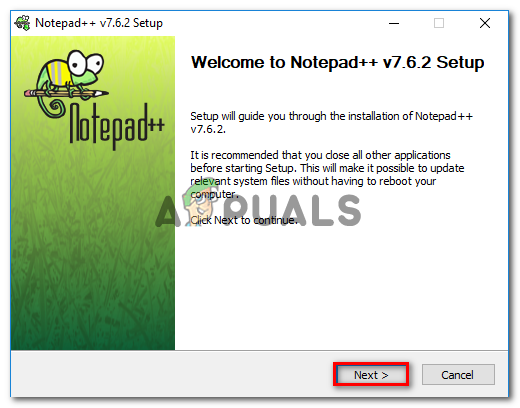
Installing Notepad++ - Once Notepad++ is installed, navigate to the location of the virtual machine that is showing you the Workstation Unrecoverable Error: (vcpu-0) error. Once you get there, right-click on the .vmx file and choose Edit with Notepad++.
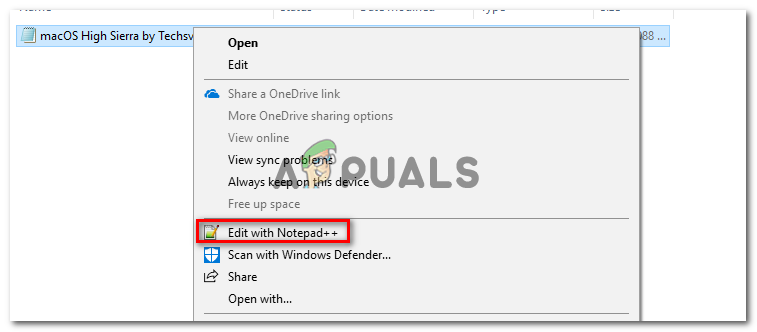
Opening the VMX file with Notepad++ Note: If you didn’t install Notepad++, choose Open with… > Notepad instead. - With the VMX file opened, paste the following line of code:
smc.version = 0Note: You don’t have to paste it in a specific place. Anywhere is fine as the file will be auto-sorted after you save it. All you have to do is make sure that you don’t paste it in the middle of another code line.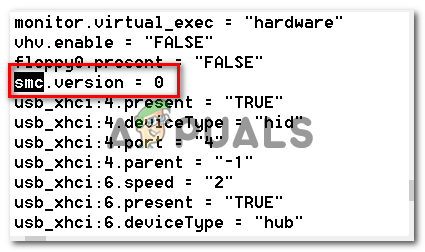
Making the VMK file Apple-compatible - Save the .VMX file and re-open the virtual machine. You should no longer encounter the VMware Workstation Unrecoverable Error: (vcpu-0) error.
Comments
Post a Comment